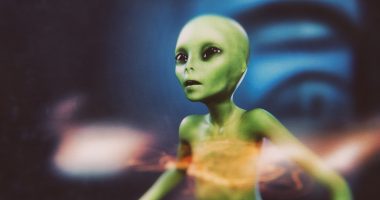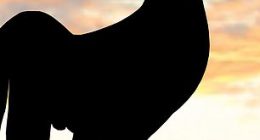Just a day after launching to orbit, SpaceX’s new Crew Dragon capsule automatically docked to a port on the International Space Station this morning — a critical part of its current test flight. This docking maneuver is something the capsule will have to do routinely in the future, when it starts transporting astronauts to and from the ISS.
The Crew Dragon has been in orbit since around 3AM ET Saturday, when it was launched into space on top of a SpaceX Falcon 9 rocket from Kennedy Space Center in Florida. Once it reached orbit, the tip of the gumdrop-shaped capsule pivoted open, exposing the capsule’s docking mechanism underneath. As the Crew Dragon approached the station on Sunday, it then used a series of lasers, sensors, and software to automatically dock this hardware to an available port on the outside of the ISS.
SpaceX sent the Crew Dragon to various waypoints outside of the station early Sunday morning, to test the vehicle’s docking capability. Using its onboard thrusters, the capsule periodically approached the ISS and then held its position over the course of two and a half hours. The capsule even backed away at one point to test the spacecraft’s capability of retreating in case of an emergency. Then once the Crew Dragon was about 20 meters away, the final command was sent to the capsule to dock with the ISS. And at 5:51AM ET, the vehicle attached itself onto the docking port. A series of hooks then deployed around the outside of the port to secure the capsule into place.
“We can confirm hard capture is complete,” Anne McClain, NASA astronaut and current ISS crew member, said once the hooks had secured the Crew Dragon. Canadian astronaut David Saint-Jacques, also on the ISS, added: “Congratulations once again to the huge team around the world that makes this possible.”
:no_upscale()/cdn.vox-cdn.com/uploads/chorus_asset/file/15115854/Screen_Shot_2019_03_03_at_6.13.23_AM.png)
This is a new type of process for SpaceX, which has never automatically docked a vehicle to the space station before. The company has been launching cargo Dragon capsules to the ISS since May of 2012, but all of those vehicles were berthed; a crew member on board the ISS captures the capsule with a robotic arm on the station and then moves the Dragon to an available port. Now, the new Crew Dragon has shown that it does not need this kind of extensive input from the crew to reach the ISS.
The docking signifies a major accomplishment for both SpaceX and NASA’s Commercial Crew Program. The Crew Dragon is one of two private US vehicles being developed to take NASA astronauts to and from the International Space Station someday. Docking is a critical process needed to ensure passengers get to the station, and today’s demonstration shows that the Crew Dragon is capable of bringing astronauts safely to the ISS.
With the Crew Dragon attached to the ISS, the three crew members on board the ISS will open the hatch on the capsule and go inside, greeting the smart dummy named Ripley that rode in one of the four passenger seats. They will also unpack the more than 400 pounds of cargo stowed on the Crew Dragon, as well as perform a series of tests on the vehicle in the days ahead. The goal is to see how the vehicle is handling the space environment, and if its design is safe and holding up as expected.
Then on Friday, SpaceX will send the capsule back home and attempt to land the vehicle with parachutes in the Atlantic Ocean. That landing will mark the last major milestone of this test mission and bring the current flight to a conclusion. Afterward, NASA will evaluate how the Crew Dragon performed during this trip and eventually determine when to move forward with the next major test flight — one that will put two astronauts on board. For SpaceX, that crewed test is currently set for this summer, but there’s still quite a lot of work for NASA and the company to do before that flight gets off the ground.
This article is from The Verge









